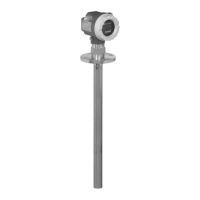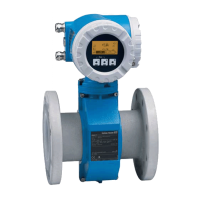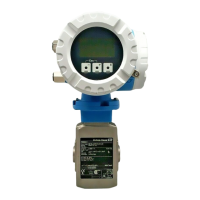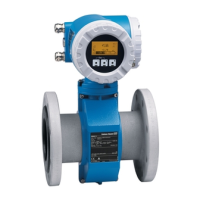Levelflex M FMP40
Endress+Hauser 41
Operating conditions: Process
Process temperature range The maximum permitted temperature at the process connection (see Figure for measuring point) is determined
by the O-ring version ordered:
Note!
The medium temperature can be higher. However, when using rope probes the stability of the probe rope is
reduced by structural changes at temperatures over 350 °C.
Process pressure limits All models: -1 to 40 bar.
The specified range may be reduced by the selected process connection. The pressure rating (PN) specified on
the flanges refers to a reference temperature of 20 °C, for ASME flanges 100 °F. Observe pressure-temperature
dependency.
Please refer to the following standards for the pressure values permitted for higher temperatures:
• EN 1092-1: 2001 Tab. 18
With regard to their temperature stability properties, the materials 1.4404 and 1.4435 are grouped under
13E0 in EN 1092-1 Tab. 18. The chemical composition of the two materials can be identical.
• ASME B 16.5a - 1998 Tab. 2-2.2 F316
• ASME B 16.5a - 1998 Tab. 2.3.8 N10276
• JIS B 2220
Note!
All Levelflex probes have two levels of sealing. There is an O-ring seal and a molded seal behind that.
Dielectric constant • With coax probe:
ε
r ≥ 1.4
• Rod and rope probe:
ε
r ≥ 1.6
Extension of the rope probes
through tension and
temperature
4 mm rope:
• Elongation through tension: at max. permitted tensile load (12 KN): 11 mm/m rope length
• Elongation through temperature increase from 30 °C to 150 °C: 2 mm/m rope length
6 mm rope:
• Elongation through tension: at max. permitted tensile load (30 KN): 13 mm/m rope length
• Elongation through temperature increase from 30 °C to 150 °C: 2 mm/m rope length
O-ring material Min. temperature Max. temperature
1)
1) For PA coated probes, the maximal admissible temperature is 100 °C.
FKM (Viton) -30 °C +150 °C
EPDM -40°C +120°C
FFKM (Kalrez) -5 °C
2)
2) The min. temperature of FFKM may be -15 °C if the max. temperature of +80 °C is not exceeded.
+150 °C

